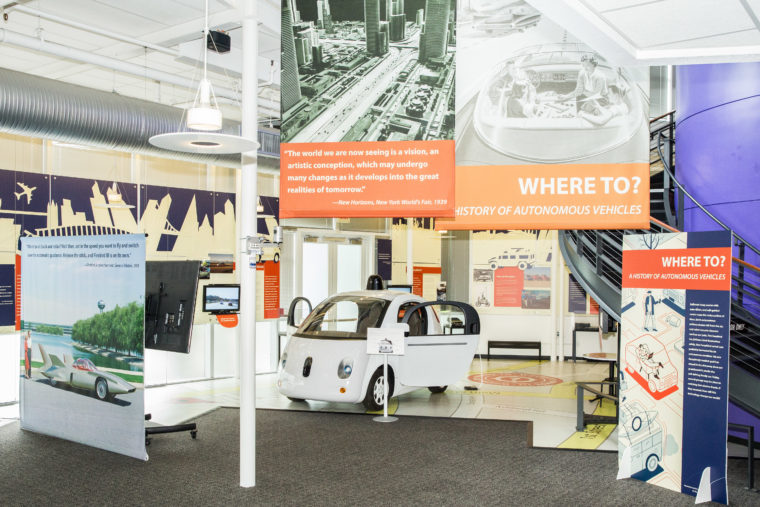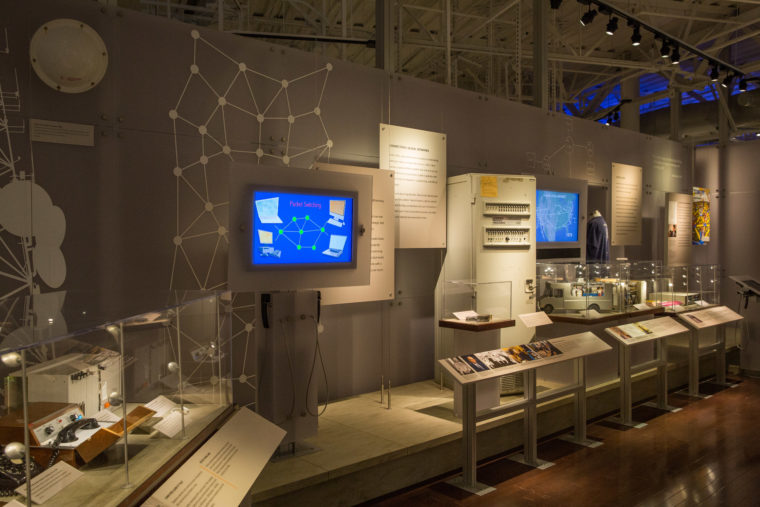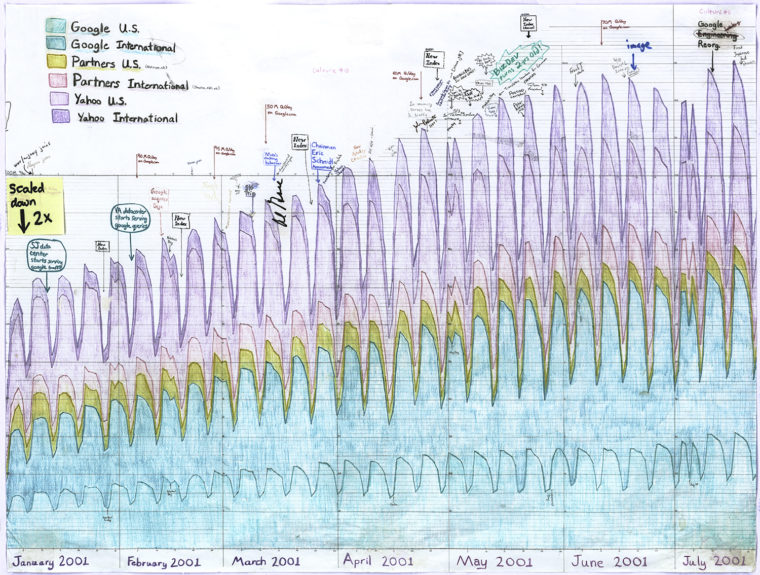
Today seven billion of us live, work, and play online. Companies and governments are making decisions that will shape the flow of information for generations to come. Yet few know how we got here, or what we might learn from earlier systems. The Internet History Program tells those stories.
From MP3 to broken dreams of a “world brain,” the Internet History Program explores our connected world through events, publications, and a comprehensive series of physical and online exhibits. The program adds to the CHM’s leading collection of networking and mobile materials to carry those stories forward to new generations.
Launched in 2009, the program grew out of the original Web History Project (1996) and Center (2005).

Taking land, air, and sea by storm! CHM’s Internet History Program explores the decades-long challenge of bringing self-driving cars to the general public in the exhibit Where To? A History of Autonomous Vehicles. Self-driving cars have remained perpetually two decades away since the 1930s, while over the past century, autonomous and semi-autonomous vehicles have conquered the air, sea and roamed the edges of our solar system.

CHM’s permanent exhibition, Revolution: The First 2000 Years of Computing, chronicles the history of computing, from the abacus to the smartphone. Revolution’s extensive 19 galleries. Featured prominently are some of the first major galleries dedicated to networking, the web, and mobile computing. These comprehensive galleries and their online counterparts provide audiences with a deep dive into the technical and social history of our digital world, covering topics like the creation of the internet, the smartphone revolution, and the onset of online communities.
Networking, Web, and Mobile Computing

CHM’s newest exhibition, Make Software: Change the World!, explores the history, impact, and technology behind seven game-changing applications: MP3, Photoshop, MRI, Car Crash Simulation, Wikipedia, Texting, and World of Warcraft. Before these applications transformed music, play, information, and communication, they found humble beginnings in early networking protocols and technical standards. The Internet History Program curated and advised on four of the seven stories, which offer rich resources and stories for understanding our connected world.
Wikipedia, Texting, MP3, and World of Warcraft

The Google Founders Collection contains artifacts, documents, photographs and video from the first 10 years of Google’s development. The initial collection was assembled within Google by VP of Product Management Richard Holden under the leadership of Susan Wojcicki, now CEO of YouTube, who housed Google’s early-stage operation—led by cofounders Larry Page and Sergey Brin—in her home in Menlo Park, CA. Marc Weber, curatorial director of CHM’s Internet History Program, worked as web historian and advisor on the project with Wojcicki and Google.

Taking land, air, and sea by storm! CHM’s Internet History Program explores the decades-long challenge of bringing self-driving cars to the general public in the exhibit Where To? A History of Autonomous Vehicles. Self-driving cars have remained perpetually two decades away since the 1930s, while over the past century, autonomous and semi-autonomous vehicles have conquered the air, sea and roamed the edges of our solar system.

CHM’s permanent exhibition, Revolution: The First 2000 Years of Computing, chronicles the history of computing, from the abacus to the smartphone. Revolution’s extensive 19 galleries. Featured prominently are some of the first major galleries dedicated to networking, the web, and mobile computing. These comprehensive galleries and their online counterparts provide audiences with a deep dive into the technical and social history of our digital world, covering topics like the creation of the internet, the smartphone revolution, and the onset of online communities.
Networking, Web, and Mobile Computing

CHM’s newest exhibition, Make Software: Change the World!, explores the history, impact, and technology behind seven game-changing applications: MP3, Photoshop, MRI, Car Crash Simulation, Wikipedia, Texting, and World of Warcraft. Before these applications transformed music, play, information, and communication, they found humble beginnings in early networking protocols and technical standards. The Internet History Program curated and advised on four of the seven stories, which offer rich resources and stories for understanding our connected world.
Wikipedia, Texting, MP3, and World of Warcraft

The Google Founders Collection contains artifacts, documents, photographs and video from the first 10 years of Google’s development. The initial collection was assembled within Google by VP of Product Management Richard Holden under the leadership of Susan Wojcicki, now CEO of YouTube, who housed Google’s early-stage operation—led by cofounders Larry Page and Sergey Brin—in her home in Menlo Park, CA. Marc Weber, curatorial director of CHM’s Internet History Program, worked as web historian and advisor on the project with Wojcicki and Google.

Taking land, air, and sea by storm! CHM’s Internet History Program explores the decades-long challenge of bringing self-driving cars to the general public in the exhibit Where To? A History of Autonomous Vehicles. Self-driving cars have remained perpetually two decades away since the 1930s, while over the past century, autonomous and semi-autonomous vehicles have conquered the air, sea and roamed the edges of our solar system.

CHM’s permanent exhibition, Revolution: The First 2000 Years of Computing, chronicles the history of computing, from the abacus to the smartphone. Revolution’s extensive 19 galleries. Featured prominently are some of the first major galleries dedicated to networking, the web, and mobile computing. These comprehensive galleries and their online counterparts provide audiences with a deep dive into the technical and social history of our digital world, covering topics like the creation of the internet, the smartphone revolution, and the onset of online communities.
Networking, Web, and Mobile Computing
To learn more or to get involved, please contact the Internet History Program.
CHM will be open on Easter Sunday, Apr. 20, 2025. Buy Tickets Now